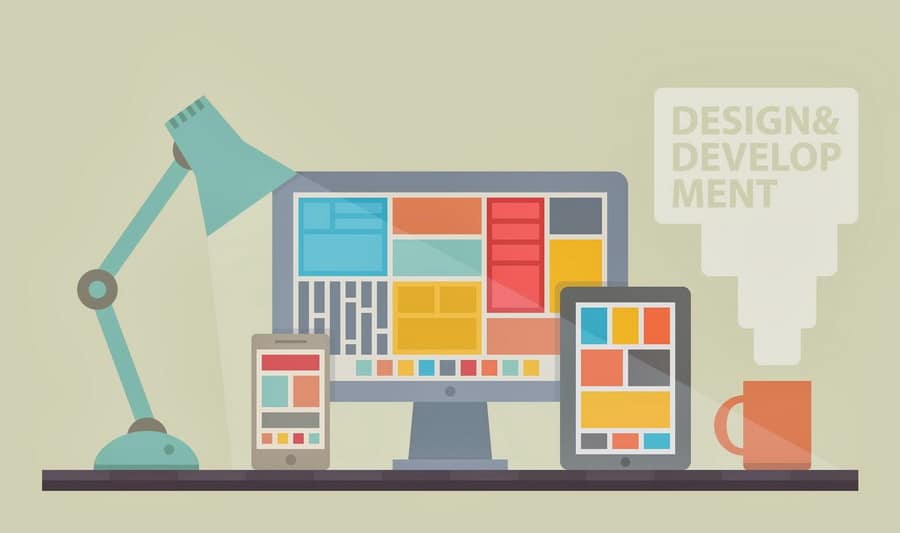Need to guarantee that guests will leave your site very quickly in the wake of arriving there? Make certain to make it troublesome for them to discover what it is they are searching for. Need to get individuals to stay on your site longer and click on or purchase stuff? Follow these 10 Web designers tips.

Have a cleaned, proficient logo and join it to your landing page.
“Your logo is an important part of your brand, so make sure it’s located prominently on your site,” says Tiffany Monhollon, senior content marketing manager at online marketer ReachLocal. “Use a high-resolution image and feature it in the upper left corner of each of your pages,” she advises. “Also, it’s a good rule of thumb to link your logo back to your home page so that visitors can easily navigate to it.”
Use intuitive navigation.
“Primary navigation options are typically deployed in a horizontal [menu] bar along the top of the site,” says Brian Gatti, a partner with Inspire Business Concepts, a digital marketing company. Provide “secondary navigation options underneath the primary navigation bar, or in the [left-hand] margin of the site, known as the sidebar.”
Give visitors breathing room.
“Create enough space between your paragraphs and images so the viewer has space to breathe and is more able to absorb all of the features your site and business have to offer,” says Hannah Spencer, graphic designer, Coalition Technologies, a Web design and online marketing agency.
“Controlling white space through layout will keep users focused on the content and control user flow,” adds Paul Novoa, founder and CEO at Novoa Media. “With a lot of visual competition taking place on the Web and on mobile, less is more. Controlling white space will improve user experience, increasing returns from the website.”
Use color strategically.
Using “a mostly neutral color palette can help your site project an elegant, clean and modern appearance,” says Mark Hoben, the head of Web design atEgencia, the business travel division of the Expedia group, who is also a believer in using color wisely. “Employing small dashes of color–for headlines or key graphics–helps guide visitors to your most important content,” he explains.
It is additionally imperative to utilize a shading palette that supplements your logo and is steady with your other showcasing materials.
Invest in good, professional photography.
“Website visitors can sniff out generic photos in a second–and they’ll be left with a generic impression of your company,” warns Zane Schwarzlose, community relations director, Fahrenheit Marketing. “Your company isn’t generic. So show your visitors that by investing in professional photography.”
“We strongly recommend that our clients invest in professional photography or purchase professional stock photos,” says Gatti. Good photographs “draw the eye, providing an emotional connection to the written content.” Poor quality photographs or photographs that have nothing to do with your message, on the other hand, are worse than having no photographs.
Choose fonts that are easy to read across devices and browsers.
At the point when picking textual styles, remember that individuals will be taking a gander at your site on a smart phone as well as on cell phones.”Some large-scaled fonts may read well on [a computer monitor], but not scale or render well on mobile, losing the desired look and feel,” explains Novoa. So he advises using a universal font.
“Pick a typeface that can be easily read and size it no less than 11pt,” says Ethan Giffin, CEO, Groove Commerce. “If you’re using Web fonts, try to use no more than two font families in order to ensure fast load times,” he says.
“If you’re using a fixed-width design, use a font size that allows a maximum of 15 to 20 words per line,” adds Lurie. “If you’re using a fluid design, use a font size that allows 15 to 20 words per line at 900 to 1000 pixels wide.”
Design every page as a landing page.
“Most websites have a design that assumes a user enters through the home page and navigates into the site,” says Michael Freeman, senior manager, Search & Analytics, ShoreTel, Inc., which provides hosted VoIP, cloud PBX service and business phone systems. “The reality, though, is that the majority of visits for most sites begin on a page that is not the home page,” he says.Hence, you have to outline the site in such a path, to the point that whatever page a guest terrains on, key data is there.
Use responsive design–that automatically adapts to how the site is being viewed.
“Rather than developing a site for each device, a responsive site is designed to adapt to the browser size,” making for a better user experience, says Jayme Pretzloff, online marketing director, Wixon Jewelers.Also a superior client encounter ordinarily interprets into additional time spent on your site and higher transformation rates.
Forget Flash.
“Thanks in part to the ongoing dispute between Adobe and Apple, the days of Flash as an Internet standard are slowly coming to a close, so why stay on the bandwagon when there are other options that are much more Web and user friendly?” asks Darrell Benatar, CEO of UserTesting.com. Instead, use HTML5, he says. “HTML5 is gaining more support on the Web, with search-engine friendly text and the ability to function on many of the popular mobile operating systems without requiring a plug-in. The same can’t be said for Flash.”
Test your design.
“Whether you are trying different placements for a call to action or even testing different shades of a color, website optimization can make a big impact to your bottom line,” states Lindsey Marshall, production director, Red Clay Interactive, an Atlanta-based interactive marketing agency. “A user experience manager at Bing once remarked that Microsoft generated an additional $80 million in annual revenue just by testing and implementing a specific shade of blue!”